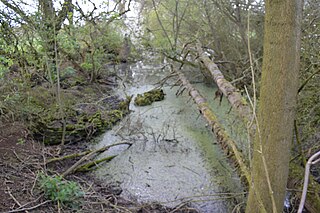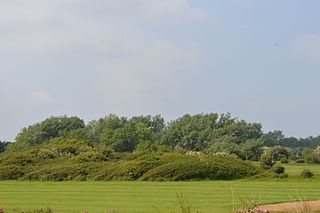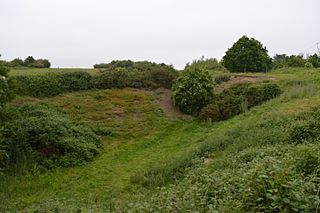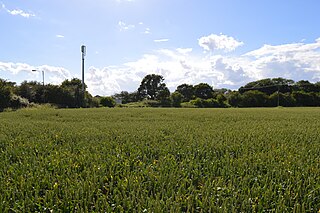| Site of Special Scientific Interest | |
 | |
| Area of Search | Essex |
|---|---|
| Grid reference | TM050236 |
| Interest | Geological |
| Area | 2.1 hectares |
| Notification | 1992 |
| Location map | Magic Map |
Wivenhoe Gravel Pit is a 2.1 hectare geological Site of Special Scientific Interest north of Wivenhoe in Essex. [1] [2] It is a Geological Conservation Review site. [3]

A Site of Special Scientific Interest (SSSI) in Great Britain or an Area of Special Scientific Interest (ASSI) in the Isle of Man and Northern Ireland is a conservation designation denoting a protected area in the United Kingdom and Isle of Man. SSSI/ASSIs are the basic building block of site-based nature conservation legislation and most other legal nature/geological conservation designations in the United Kingdom are based upon them, including national nature reserves, Ramsar sites, Special Protection Areas, and Special Areas of Conservation. The acronym "SSSI" is often pronounced "triple-S I".
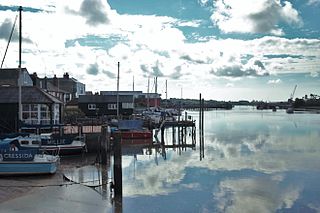
Wivenhoe is a town and civil parish in north eastern Essex, England, approximately 3 miles (4.8 km) south east of Colchester. Historically Wivenhoe village, on the banks of the River Colne, and Wivenhoe Cross, on the higher ground to the north, were two separate settlements but with considerable development in the 19th century the two have merged.

Essex is a county in the south-east of England, north-east of London. One of the home counties, it borders Suffolk and Cambridgeshire to the north, Hertfordshire to the west, Kent across the estuary of the River Thames to the south, and London to the south-west. The county town is Chelmsford, the only city in the county. For government statistical purposes Essex is placed in the East of England region.
The site is the type locality for the Wivenhoe Gravel, which was laid down by the River Thames before it was diverted south to its present course by the Anglian glaciation around 450,000 years ago. The gravel was laid down during two cold stages with an intervening interglacial, but the fossils in from this warmer period are not distinctive enough to identify which interglacial they come from. The site is important for establishing the previous course of the Thames. Two worked flints may be evidence of occupation by Homo heidelbergensis around half a million years ago. [4]

The River Thames, known alternatively in parts as the Isis, is a river that flows through southern England including London. At 215 miles (346 km), it is the longest river entirely in England and the second longest in the United Kingdom, after the River Severn.

An interglacial period is a geological interval of warmer global average temperature lasting thousands of years that separates consecutive glacial periods within an ice age. The current Holocene interglacial began at the end of the Pleistocene, about 11,700 years ago.

Homo heidelbergensis is an extinct species or subspecies of archaic humans in the genus Homo, which radiated in the Middle Pleistocene from about 700,000 to 300,000 years ago, known from fossils found in Southern Africa, East Africa and Europe. African H. heidelbergensis has several subspecies. The subspecies are Homo heidelbergensis heidelbergensis, Homo heidelbergensis daliensis, Homo rhodesiensis, and Homo heidelbergensis steinheimensi. The derivation of Homo sapiens from Homo rhodesiensis has often been proposed, but is obscured by a fossil gap from 400–260 kya. The species was originally named Homo heidelbergensis due to the skeleton's first discovery near Heidelberg, Germany.
The pit, which is now water filled, is in a field off Brightlingsea Road opposite Broad Lanes.








